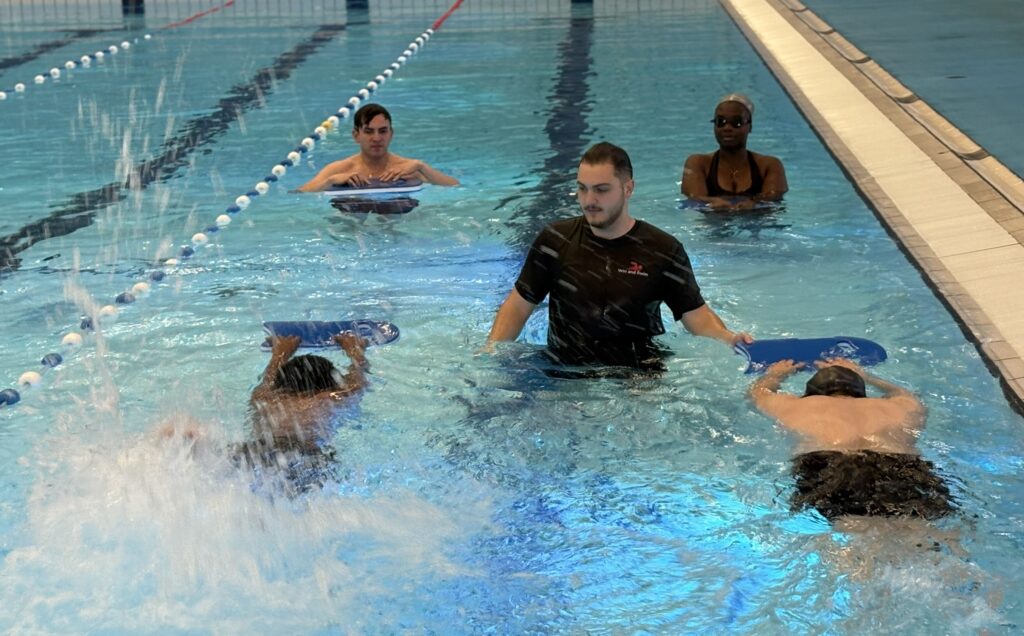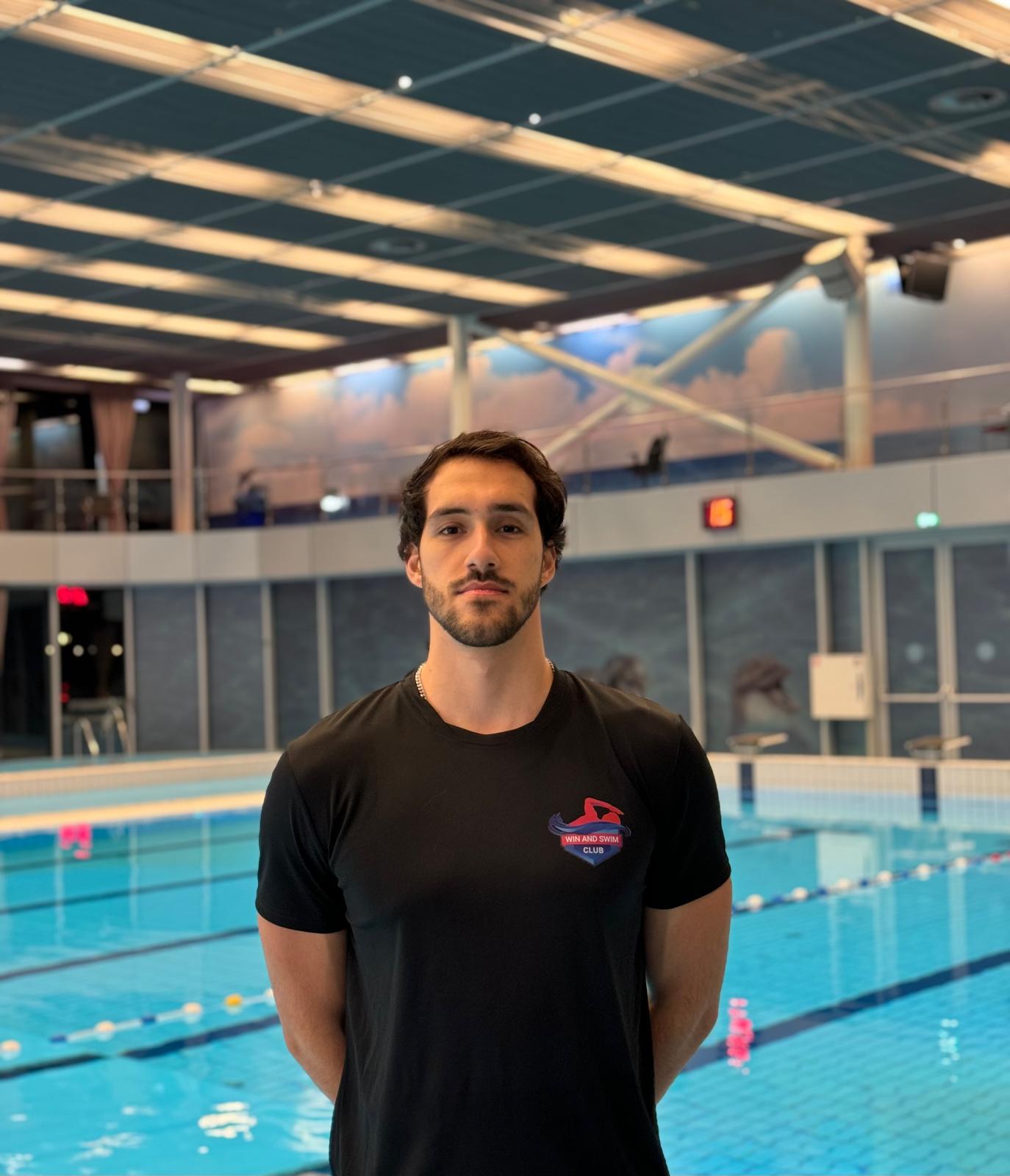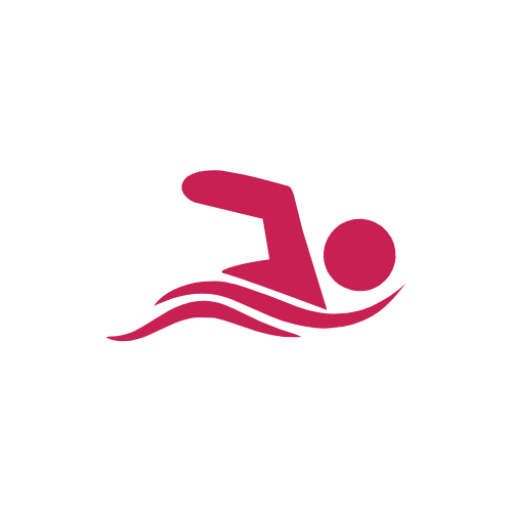The Ultimate Beginner’s Guide to Swimming: Tips for Getting Started
If you’re looking to start swimming, this guide will help you understand the essentials. We’ll cover everything from the benefits of swimming to necessary gear, basic techniques, and common beginner mistakes. The more you check off, the better prepared you’ll be!

Benefits of Swimming
Before diving in, you might be wondering, why choose swimming? Swimming is an incredible full-body workout with low-impact exercises. It improves cardiovascular health, builds endurance, strengthens muscles, and helps with weight loss. Additionally, swimming reduces stress and enhances mental well-being. One of its greatest advantages is that it’s suitable for all ages, making it a lifelong skill and fitness activity.
1. Essential Swimming Gear
Before you hit the pool, it’s important to have the right gear. Unlike beachwear, swimming gear is specifically designed for efficiency and comfort in the water. Here’s what you’ll need:
- Swimsuit – Choose a well-fitting, comfortable material that allows easy movement. Speedo offers great affordable options, while Arena provides premium choices for professional swimmers.
- Goggles – Since you’ll have your face in the water often, a good pair of goggles is crucial. They should fit snugly to prevent water from leaking in but not be overly tight to cause discomfort.
- Swim Cap – Ideal for swimmers with long hair or those who prefer better hydrodynamics. It keeps hair out of your face and reduces drag in the water.
- Kickboard & Pull Buoy – These are helpful training tools for beginners, but they should be used under the supervision of a coach to ensure proper technique.
2. Basic Swimming Techniques
Before learning strokes, mastering basic water skills is essential. Start with:
- Floating – Begin in shallow water. Lie on your back, take a deep breath, and hold it while spreading your arms and legs in a star position.
- Leg Kicks – Learning proper kicking techniques helps generate momentum. Start with flutter kicks while holding onto a kickboard.
- Treading Water – This skill allows you to stay afloat without swimming forward. Move your arms in a circular motion while making small scissor kicks.
For more details, check out our article on basic swimming techniques.
3. Beginner-Friendly Swimming Drills
Drills are essential for building confidence and improving technique. Here’s where to start:
- Flutter Kicks – Use a kickboard and practice kicking with straight legs, focusing on creating propulsion.
- Arm Movements – Begin with one-arm freestyle drills while keeping a proper body position.
- Breathing Practice – Work on exhaling underwater and turning your head smoothly for air without lifting it too high.
4. Safety Tips
Staying safe in the water is crucial. Keep these tips in mind:
- Follow Pool Rules – Always read and adhere to posted swimming pool guidelines.
- Supervision is Key – If possible, start with a professional instructor. If not, let the lifeguard know you’re a beginner so they can keep an eye on you.
- Space Awareness – Ensure you have enough room to practice without interfering with other swimmers.
5. Common Swimming Mistakes Beginners Make
Avoid these common pitfalls to accelerate your learning:
- Incorrect Head Position – Your head controls buoyancy and speed. Keeping it too high or too low can disrupt balance.
- Breathing Too Often or Too Rarely – Proper breathing timing is crucial for efficiency and stamina.
- Poor Hand Position – Fully extend your arms during strokes to maximize propulsion.
- Short Strokes – Make sure to push your arms all the way back to your hips for maximum effectiveness (except in breaststroke).
- Neglecting Leg Work – Kicks provide balance and propulsion; don’t rely solely on arm movements.
Check out our previous article on swimming mistakes and how to correct them for more details.
6. Where to Learn Swimming
Taking swimming lessons is the fastest and safest way to learn. Most public pools offer group lessons, which provide excellent quality at an affordable price. In Amsterdam, Win and Swim offers personalized beginner lessons in small groups (up to 5 people). Learning in a group is beneficial as it creates a supportive environment and makes training more enjoyable.
7. Staying Motivated and Tracking Progress
Progress in swimming can feel slow at times, so tracking your improvement is essential. Here’s how to stay on track:
- Set Realistic Goals – Instead of aiming to swim like a pro in a week, set achievable milestones.
- Join a Swimming Group – Practicing with others keeps you engaged and motivated.
- Celebrate Small Wins – Recognize every improvement, whether it’s better breath control or swimming a longer distance without stopping.
Swimming is an enjoyable and rewarding skill that improves both physical and mental well-being. Follow this guide, stay consistent, and soon, you’ll be gliding through the water with confidence!

KNZB‑certified swim coach, former Romanian national and international freestyle medalist, and founder of Win and Swim Amsterdam. Passionate about adult‑learners and evidence‑based technique. With bachelor degree in swimming and first aid course, swimming is my element.
